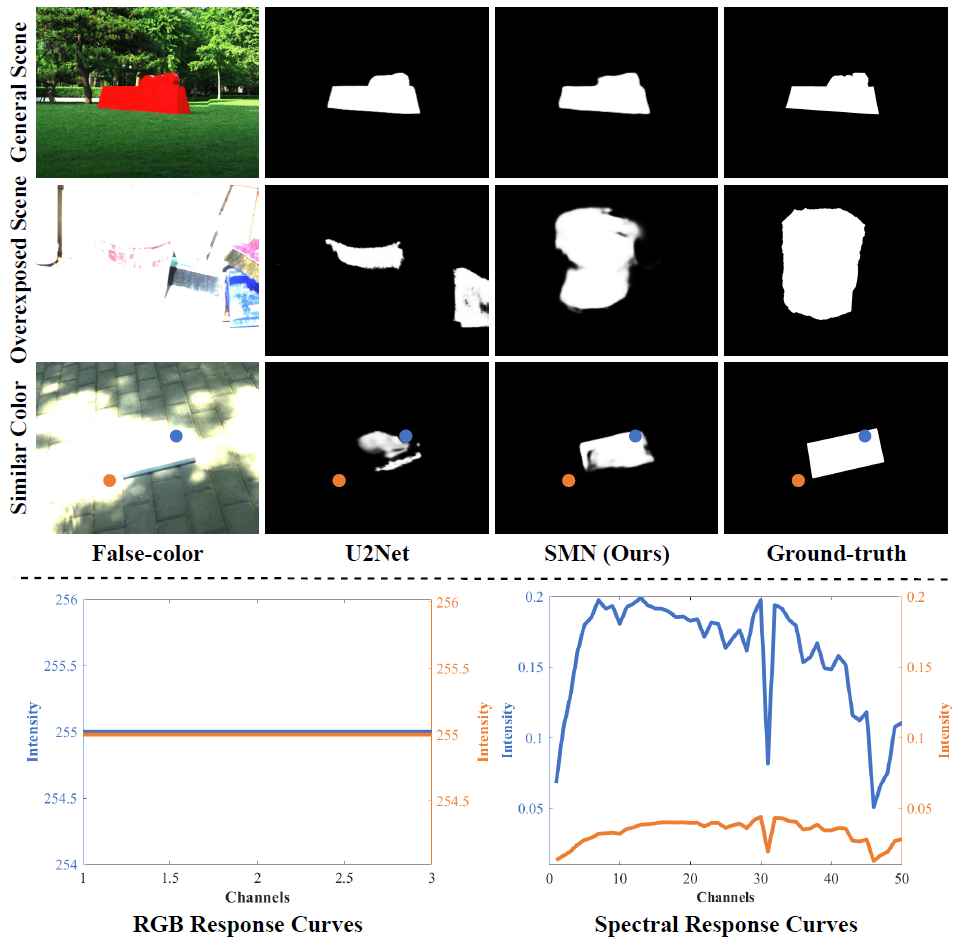Spectrum-driven Mixed-frequency Network for Hyperspectral Salient Object Detection
Hyperspectral salient object detection (HSOD) aims to detect spectrally salient objects in hyperspectral images (HSIs). However, existing methods inadequately utilize spectral information by either converting HSIs into false-color images or converging neural networks with clustering. We propose a novel approach that fully leverages the spectral characteristics by extracting two distinct frequency components from the spectrum: low-frequency Spectral Saliency and high-frequency Spectral Edge. The Spectral Saliency approximates the region of salient objects, while the Spectral Edge captures edge information of salient objects. These two complementary components, crucial for HSOD, are derived by computing from the inter-layer spectral angular distance of the Gaussian pyramid and the intra-neighborhood spectral angular gradients, respectively. To effectively utilize this dual-frequency information, we introduce a novel lightweight Spectrum-driven Mixed-frequency Network (SMN). SMN incorporates two parameter-free plug-and-play operators, namely Spectral Saliency Generator and Spectral Edge Operator, to extract the Spectral Saliency and Spectral Edge components from the input HSI independently. Subsequently, the Mixed-frequency Attention module, comprised of two frequency-dependent heads, intelligently combines the embedded features of edge and saliency information, resulting in a mixed-frequency feature representation. Furthermore, a saliency-edge-aware decoder progressively scales up the mixed-frequency feature while preserving rich detail and saliency information for accurate salient object prediction. Extensive experiments conducted on the HS-SOD benchmark and our custom dataset HSOD-BIT demonstrate that our SMN outperforms state-of-the-art methods regarding HSOD performance. Code and dataset will be available at https://github.com/laprf/SMN.
PDF Abstract



 HS-SOD
HS-SOD